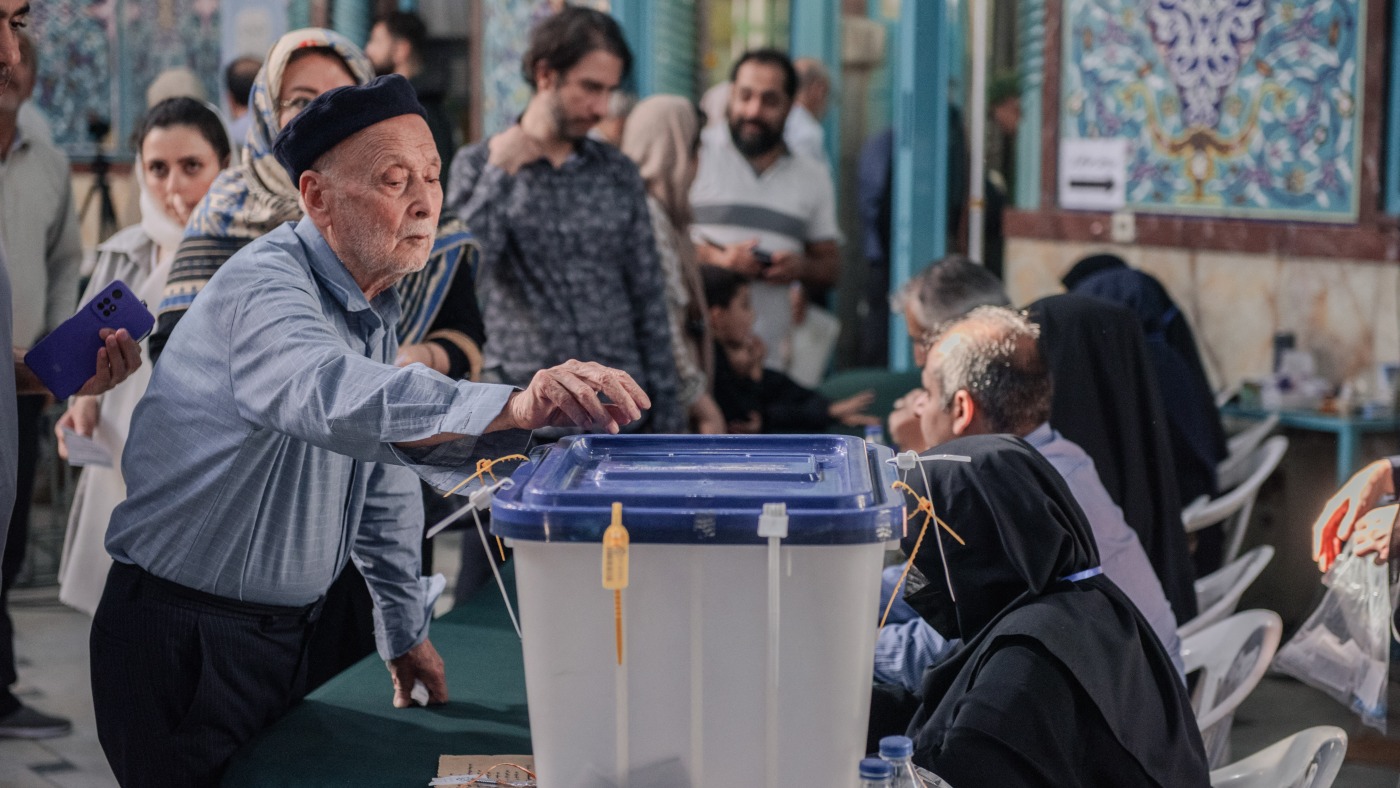
An Iranian man casts his vote at a polling station in Tehran during the country’s presidential election on Friday.
Hossein Beris/AFP
hide caption
toggle caption
Hossein Beris/AFP
Iranians will head back to the polls next week to decide between a reformist and a hard-line conservative for president.
The runoff election comes after the first vote, which took place on Friday, ended with none of the candidates receiving a majority. Under Iranian election law, a candidate must get 50% and one vote in order to secure an outright victory.
But two top contenders did emerge: reformist Masoud Pezeshkian and hardliner Saeed Jalili.
Pezeshkian has called for greater outreach to the outside world as a means of improving Iran’s economy, while Jalili is a former nuclear negotiator with strong anti-Western views.
The two will face off in a second round of voting scheduled for July 5. The snap election is to replace former President Ebrahim Raisi who died in a helicopter crash last month.
In Iran, the supreme leader yields the most power. But the president can still have influence on domestic and some foreign policies.
This upcoming election will be the second presidential runoff in the country’s history. The first took place in 2005, when hard-liner Mahmoud Ahmadinejad won against former President Akbar Hashemi Rafsanjani. Iran’s critics are quick to note that the country’s elections are not free or fair.
How the first vote went
On Friday, Pezeshkian received 10.4 million votes while Jalili trailed with 9.4 million, according to Iran’s Islamic Republic News Agency.
As some expected, the hard-line vote was divided, while Pezeshkian is believed to have captured many votes from moderate or reform-minded Iranians.
The election also confirmed widespread disenchantment among voters with the current political process in Iran. Turnout looks to have been a record low in the history of the Islamic Republic, continuing a trend seen in other recent elections.
What’s at stake
Prior to President Raisi’s death, the hard-liner was viewed as a protégé and possible successor of the 85-year-old supreme leader Ayatollah Ali Khamenei.
Now, the prospect of who may replace Khamenei, who holds the power to make the most major decisions in Iran, is even more unclear.
What is apparent is that Khamenei does not support many of the reformist ideas put forth by Pezeshkian, including seeking greater engagement with other countries.
But at large, observers don’t predict significant change to come out of this vote. No candidate has proposed policies that would be considered controversial, such as as addressing the strict Islamic dress code for women.
#Iran #runoff #presidential #election #set #reformist #hardliner #NPR,
#Iran #runoff #presidential #election #set #reformist #hardliner #NPR


